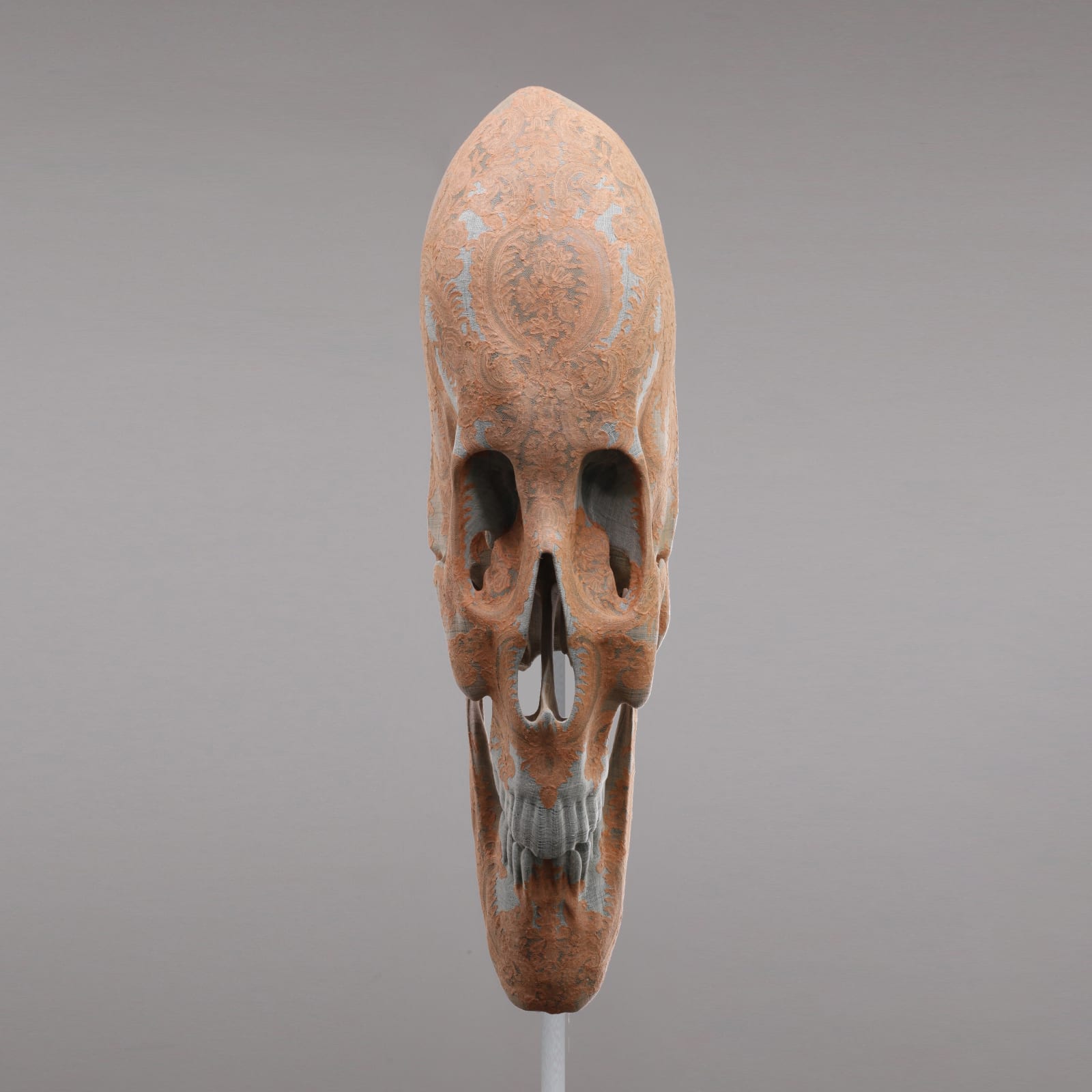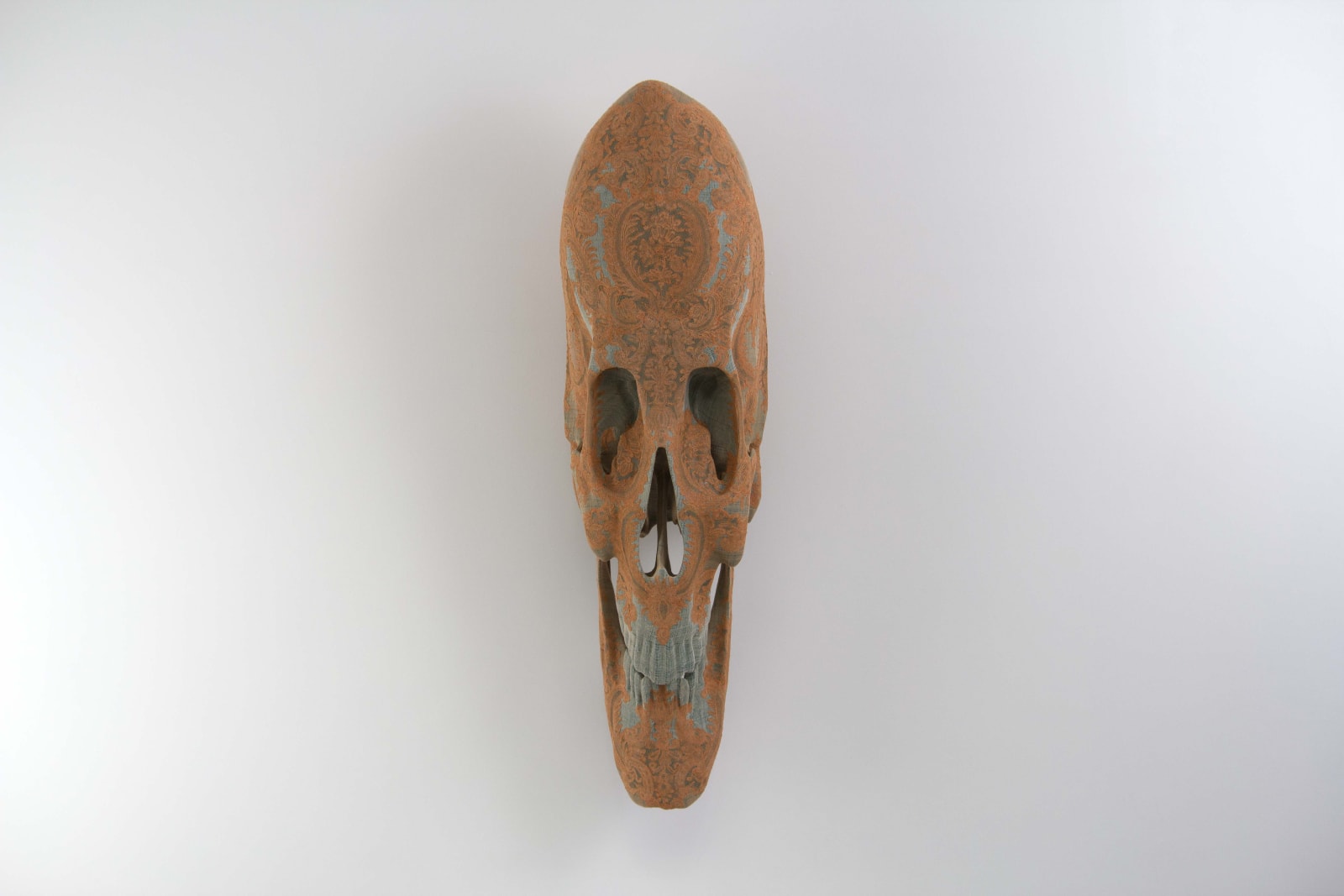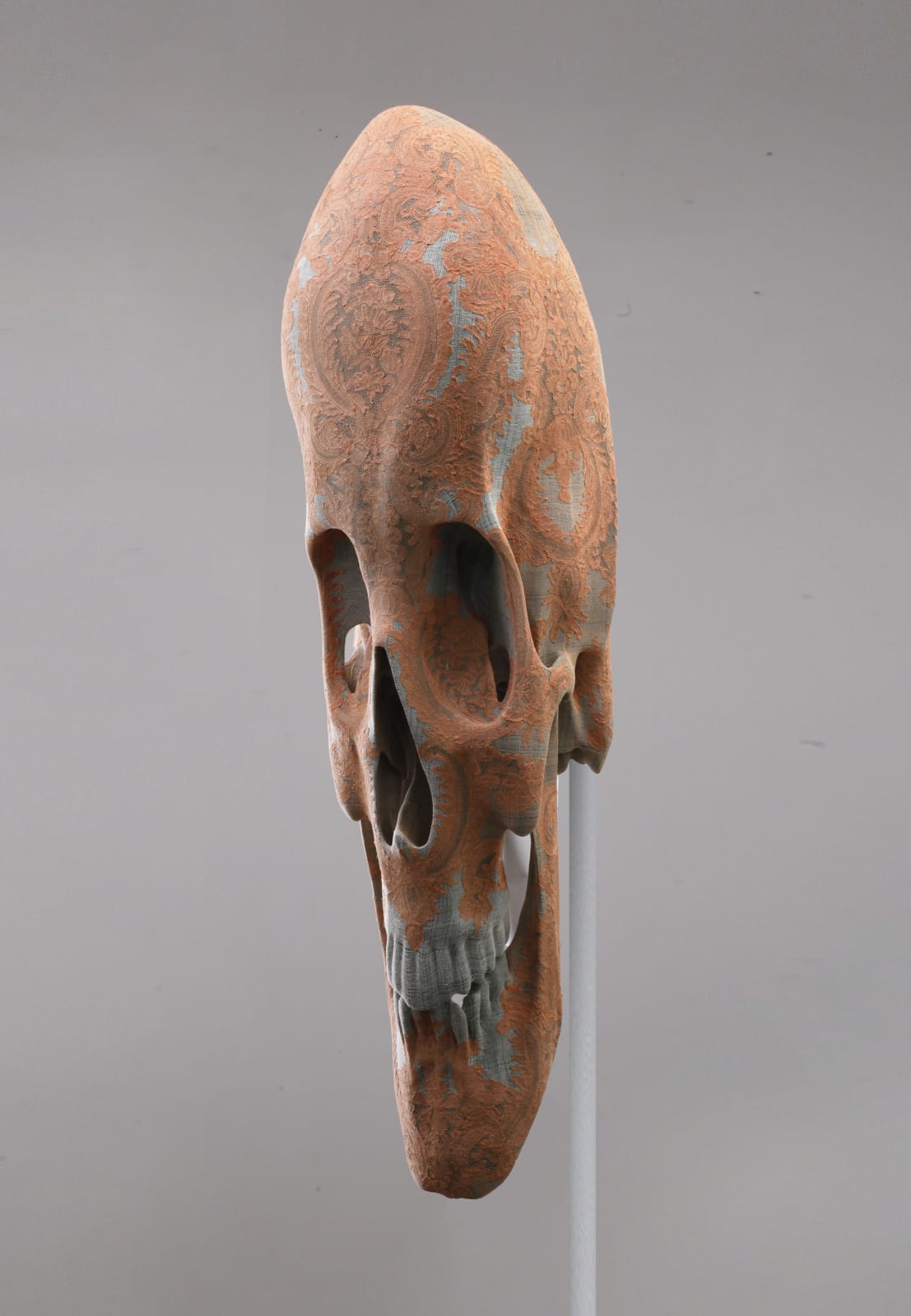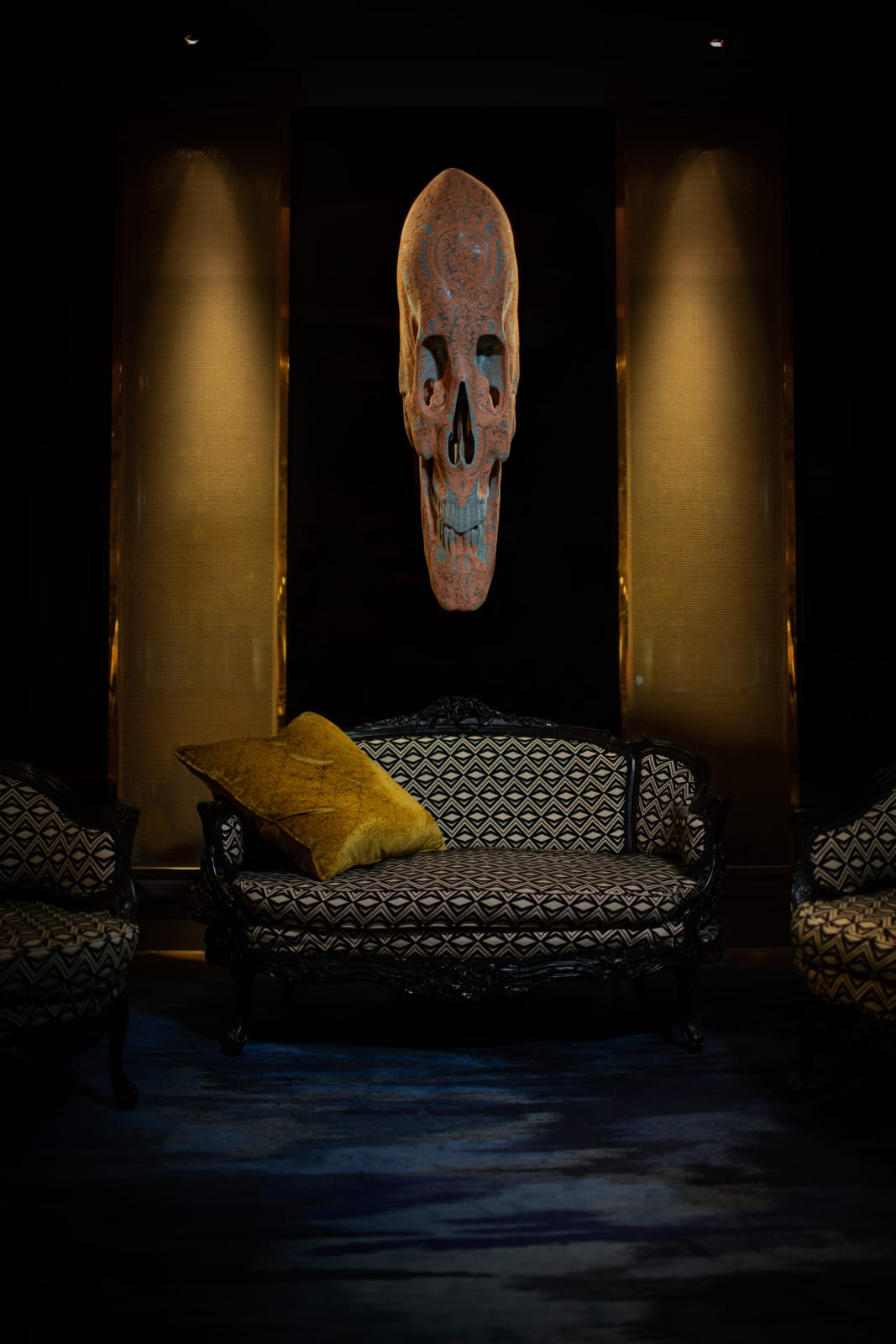Javier Murcia Spain, b. 1975
Further images
Eidos:
/ˈʌɪdɒs/
The distinctive expression of the cognitive or intellectual character of a culture or social group. Following on from the sell-out success of the Oxidations series Murcia made some key observations. His collectors gravitated to the visual experience of a beautifully sculpted object, the physical form instead of the conceptual aspects of the skull. For Murcia, the interest in the human skull lay not only in its form but in its iconic status, the hierarchical positioning within anatomy and its cultural position throughout history. Murcia states, "the skull is the logic, the structure, anchored, steady and enduring". The patinas' extensive exploration and visual success lead Murcia to challenge himself to explore the form. Distorting and scaling up created a discomforting experience of the appearance of the skull. The final pieces command presence and require distance from which to be viewed. From this distance, the viewer is lead to contemplate questions of the mind and its part in forming identity, ideas, ideals, culture, religion, technology, and all that we experience. Eidos reminds us that we can create worlds just by thinking.
Eidos Culture 1-4:
In its inception, lace was attempting to recreate the beauty, patterns, rhythms, and forms present in nature. Here, Murcia presents us with examples from France, Italy, Spain and Belgium, who were the first cultures to explore this art form. Lace was in all these cultures viewed as a status symbol, accessible only to the bourgeoisie and Royal Aristocracy. Each lace work signified cultural interests and religious practices of the time. Murcia sourced genuine XIXc pieces of lace from around the world, with the detail bringing a lavish richness of texture, colour and cultural significance to every piece.










